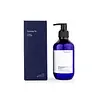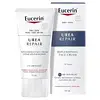What's inside
What's inside
 Key Ingredients
Key Ingredients

 Benefits
Benefits

 Concerns
Concerns

 Ingredients Side-by-side
Ingredients Side-by-side

Water
Skin ConditioningGlycerin
HumectantDipropylene Glycol
HumectantCaprylic/Capric Triglyceride
MaskingIsopropyl Palmitate
EmollientPolyglyceryl-3 Distearate
EmulsifyingButyrospermum Parkii Butter
Skin ConditioningPentaerythrityl Stearate/Caprate/Caprylate/Adipate
EmollientHydroxyethyl Urea
HumectantCentella Asiatica Extract
CleansingCamellia Sinensis Leaf Extract
AntimicrobialMentha Viridis Extract
MaskingLonicera Japonica Flower Extract
Skin ConditioningCalendula Officinalis Flower Extract
MaskingMelilotus Officinalis Extract
AstringentTrehalose
HumectantHelianthus Annuus Seed Oil
EmollientMacadamia Ternifolia Seed Oil
EmollientOlea Europaea Fruit Oil
MaskingSodium Hyaluronate
HumectantSodium Acetylated Hyaluronate
HumectantHydrolyzed Hyaluronic Acid
HumectantHydroxypropyltrimonium Hyaluronate
Sodium Hyaluronate Crosspolymer
HumectantCeramide Ns
Skin ConditioningCeramide NP
Skin ConditioningCeramide EOP
Skin ConditioningPotassium Cetyl Phosphate
EmulsifyingBrassica Campestris Sterols
EmollientCholesterol
EmollientPhytosteryl/Behenyl/Octyldodecyl Lauroyl Glutamate
Skin ConditioningPolyglyceryl-10 Oleate
Skin ConditioningStearic Acid
CleansingPalmitic Acid
EmollientOleic Acid
EmollientMyristic Acid
CleansingArachidic Acid
CleansingSorbitan Stearate
EmulsifyingStearyl Alcohol
EmollientGlyceryl Stearate Citrate
EmollientSodium Polyacryloyldimethyl Taurate
Emulsion StabilisingCarbomer
Emulsion StabilisingTromethamine
BufferingHydrogenated Polydecene
EmollientHydrogenated Lecithin
EmulsifyingEthylhexylglycerin
Skin ConditioningXanthan Gum
EmulsifyingDisodium EDTA
Trideceth-10
CleansingTocopherol
AntioxidantButylene Glycol
HumectantCaprylyl Glycol
EmollientPentylene Glycol
Skin ConditioningHydroxyacetophenone
Antioxidant1,2-Hexanediol
Skin ConditioningWater, Glycerin, Dipropylene Glycol, Caprylic/Capric Triglyceride, Isopropyl Palmitate, Polyglyceryl-3 Distearate, Butyrospermum Parkii Butter, Pentaerythrityl Stearate/Caprate/Caprylate/Adipate, Hydroxyethyl Urea, Centella Asiatica Extract, Camellia Sinensis Leaf Extract, Mentha Viridis Extract, Lonicera Japonica Flower Extract, Calendula Officinalis Flower Extract, Melilotus Officinalis Extract, Trehalose, Helianthus Annuus Seed Oil, Macadamia Ternifolia Seed Oil, Olea Europaea Fruit Oil, Sodium Hyaluronate, Sodium Acetylated Hyaluronate, Hydrolyzed Hyaluronic Acid, Hydroxypropyltrimonium Hyaluronate, Sodium Hyaluronate Crosspolymer, Ceramide Ns, Ceramide NP, Ceramide EOP, Potassium Cetyl Phosphate, Brassica Campestris Sterols, Cholesterol, Phytosteryl/Behenyl/Octyldodecyl Lauroyl Glutamate, Polyglyceryl-10 Oleate, Stearic Acid, Palmitic Acid, Oleic Acid, Myristic Acid, Arachidic Acid, Sorbitan Stearate, Stearyl Alcohol, Glyceryl Stearate Citrate, Sodium Polyacryloyldimethyl Taurate, Carbomer, Tromethamine, Hydrogenated Polydecene, Hydrogenated Lecithin, Ethylhexylglycerin, Xanthan Gum, Disodium EDTA, Trideceth-10, Tocopherol, Butylene Glycol, Caprylyl Glycol, Pentylene Glycol, Hydroxyacetophenone, 1,2-Hexanediol
Water
Skin ConditioningUrea
BufferingGlycerin
HumectantTriisostearin
Skin ConditioningPentaerythrityl Tetraisostearate
EmollientCyclomethicone
EmollientDimethicone
EmollientCaprylic/Capric Triglyceride
MaskingCetyl Alcohol
EmollientSodium Lactate
BufferingGlyceryl Stearate
EmollientBiosaccharide Gum-1
HumectantBenzyl Alcohol
PerfumingPEG-40 Stearate
EmulsifyingMethylparaben
PreservativeLactic Acid
BufferingLanolin Alcohol
Emollient
 Reviews
Reviews

Ingredients Explained
These ingredients are found in both products.
Ingredients higher up in an ingredient list are typically present in a larger amount.
This ingredient is an emollient, solvent, and texture enhancer. It is considered a skin-softener by helping the skin prevent moisture loss.
It helps thicken a product's formula and makes it easier to spread by dissolving clumping compounds.
Caprylic Triglyceride is made by combining glycerin with coconut oil, forming a clear liquid.
While there is an assumption Caprylic Triglyceride can clog pores due to it being derived from coconut oil, there is no research supporting this.
Learn more about Caprylic/Capric TriglycerideGlycerin is already naturally found in your skin. It helps moisturize and protect your skin.
A study from 2016 found glycerin to be more effective as a humectant than AHAs and hyaluronic acid.
As a humectant, it helps the skin stay hydrated by pulling moisture to your skin. The low molecular weight of glycerin allows it to pull moisture into the deeper layers of your skin.
Hydrated skin improves your skin barrier; Your skin barrier helps protect against irritants and bacteria.
Glycerin has also been found to have antimicrobial and antiviral properties. Due to these properties, glycerin is often used in wound and burn treatments.
In cosmetics, glycerin is usually derived from plants such as soybean or palm. However, it can also be sourced from animals, such as tallow or animal fat.
This ingredient is organic, colorless, odorless, and non-toxic.
Glycerin is the name for this ingredient in American English. British English uses Glycerol/Glycerine.
Learn more about GlycerinWater. It's the most common cosmetic ingredient of all. You'll usually see it at the top of ingredient lists, meaning that it makes up the largest part of the product.
So why is it so popular? Water most often acts as a solvent - this means that it helps dissolve other ingredients into the formulation.
You'll also recognize water as that liquid we all need to stay alive. If you see this, drink a glass of water. Stay hydrated!
Learn more about Water